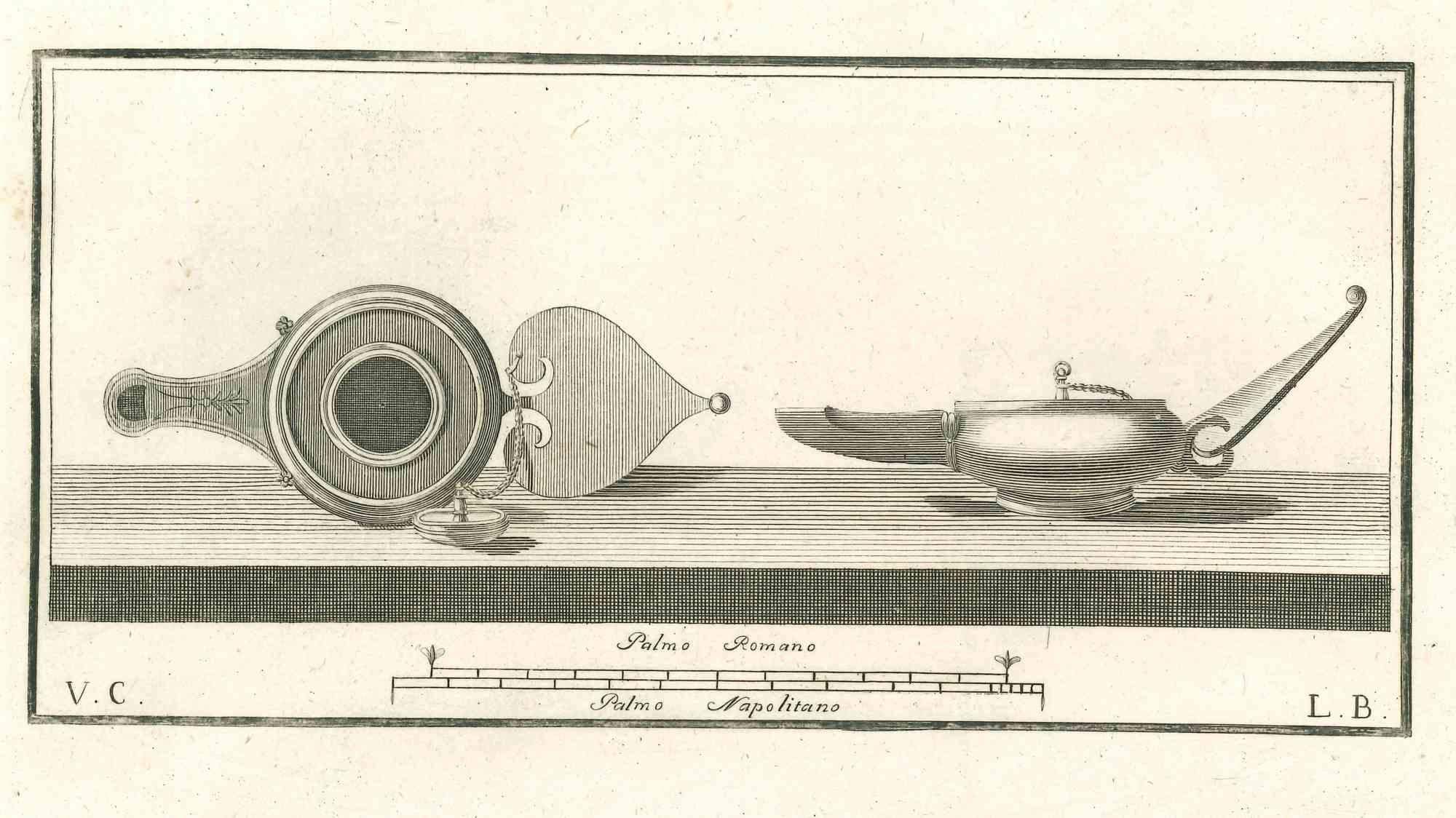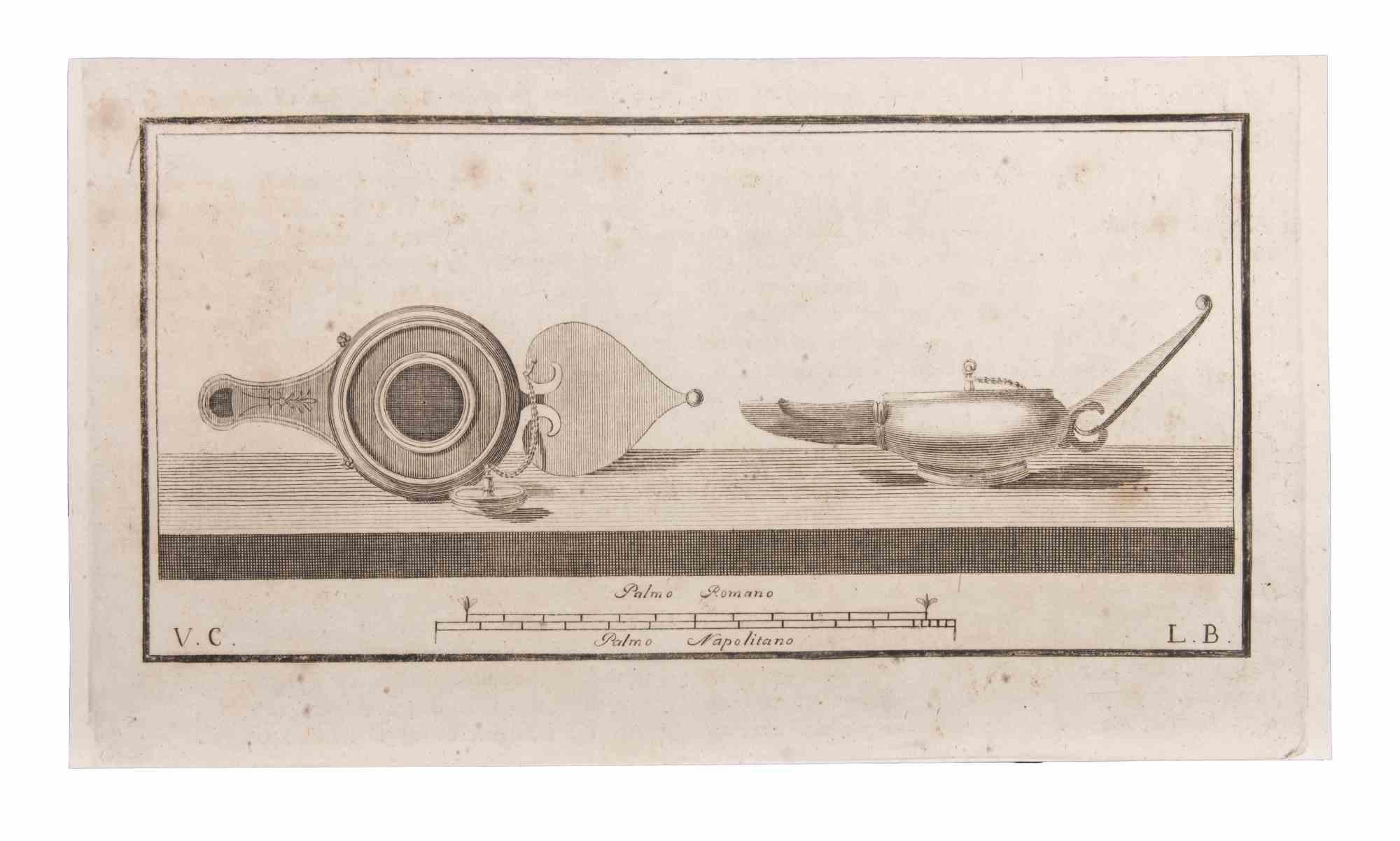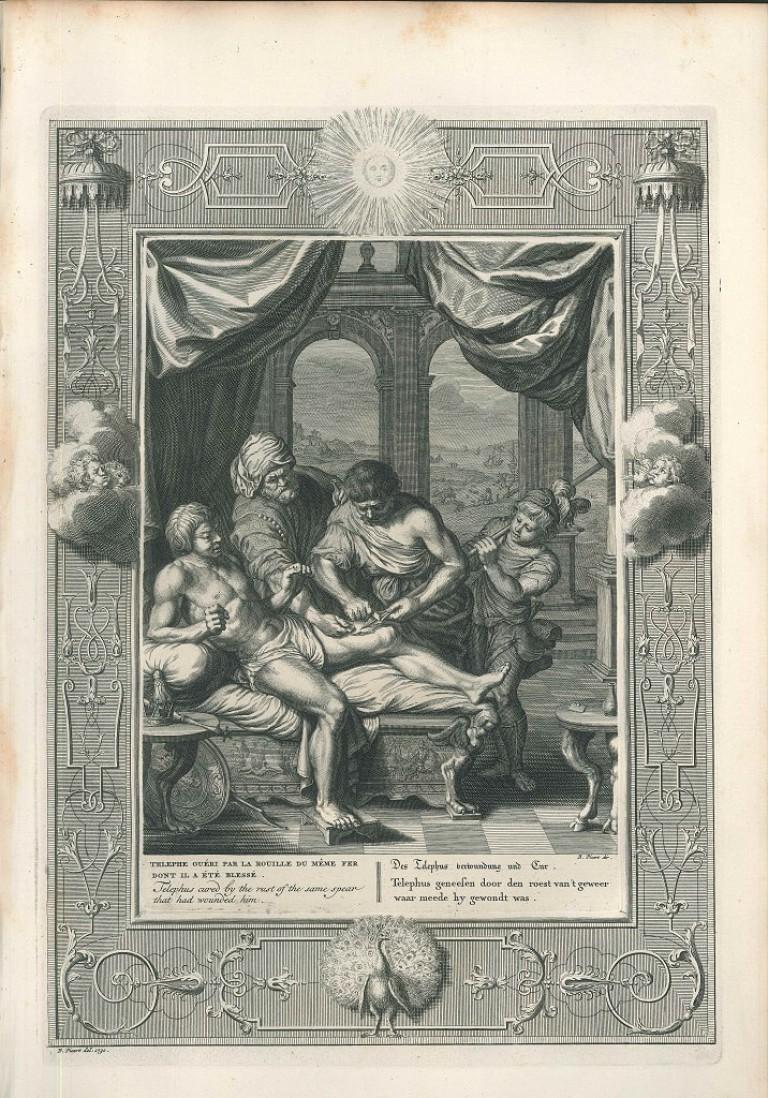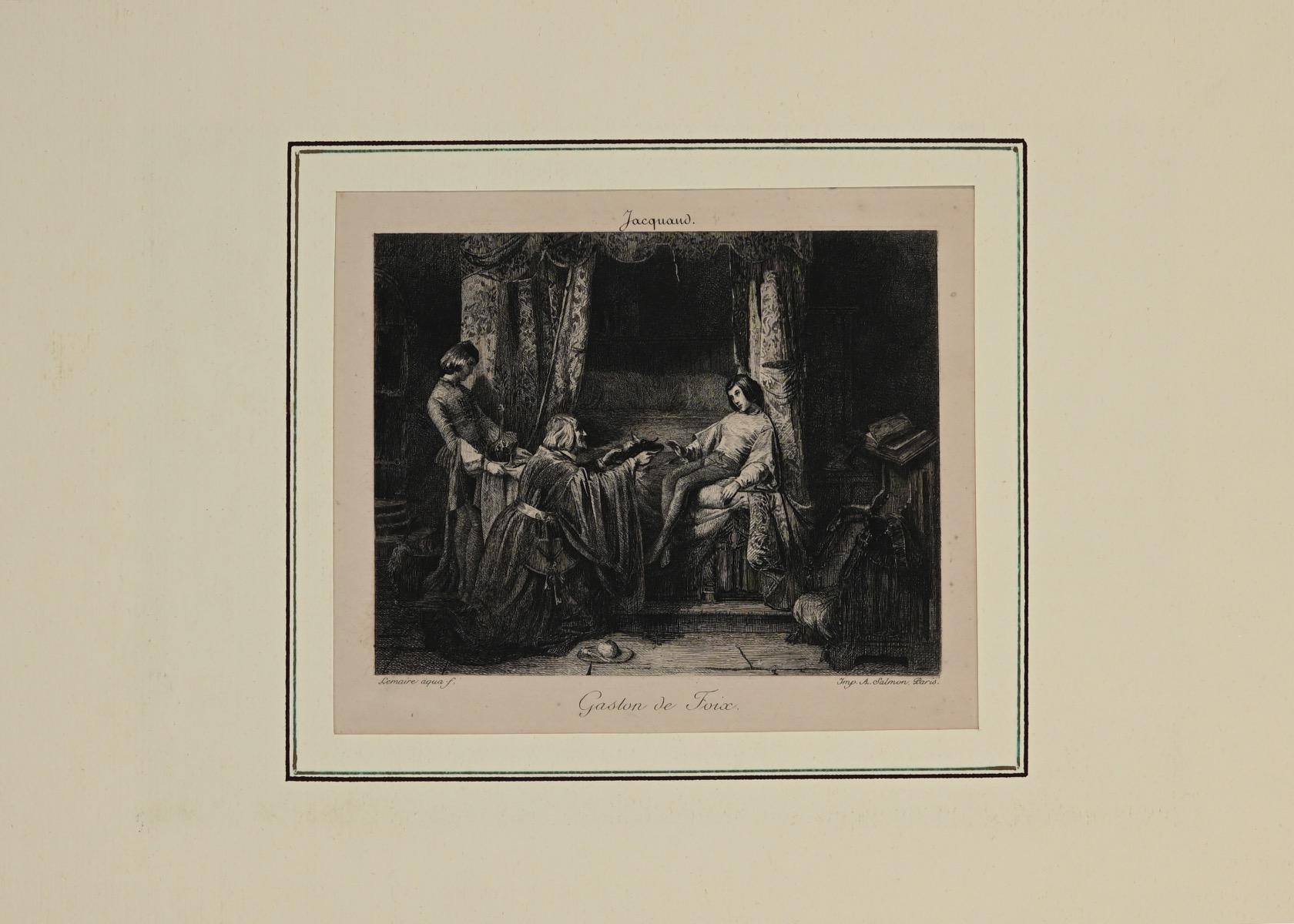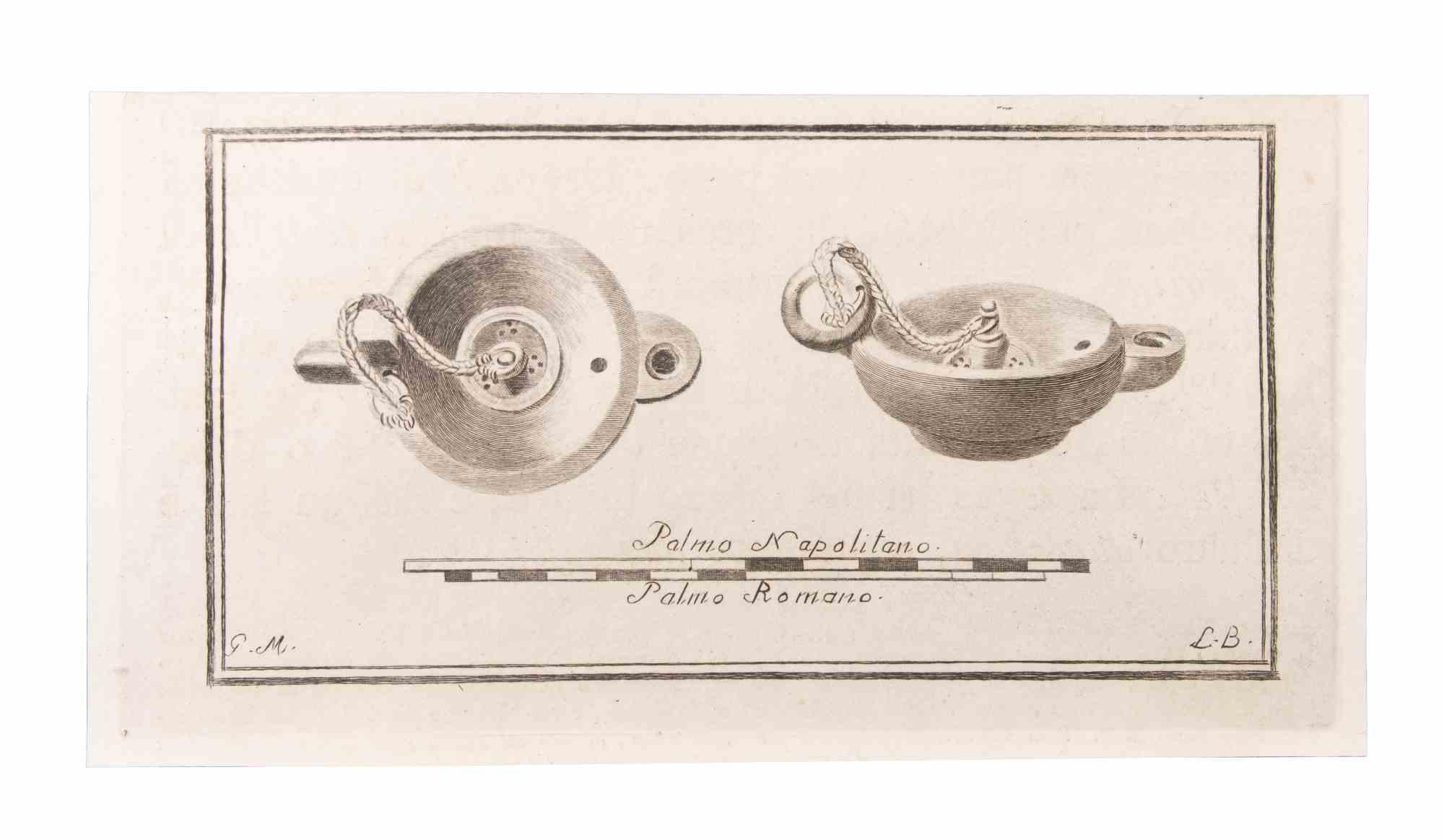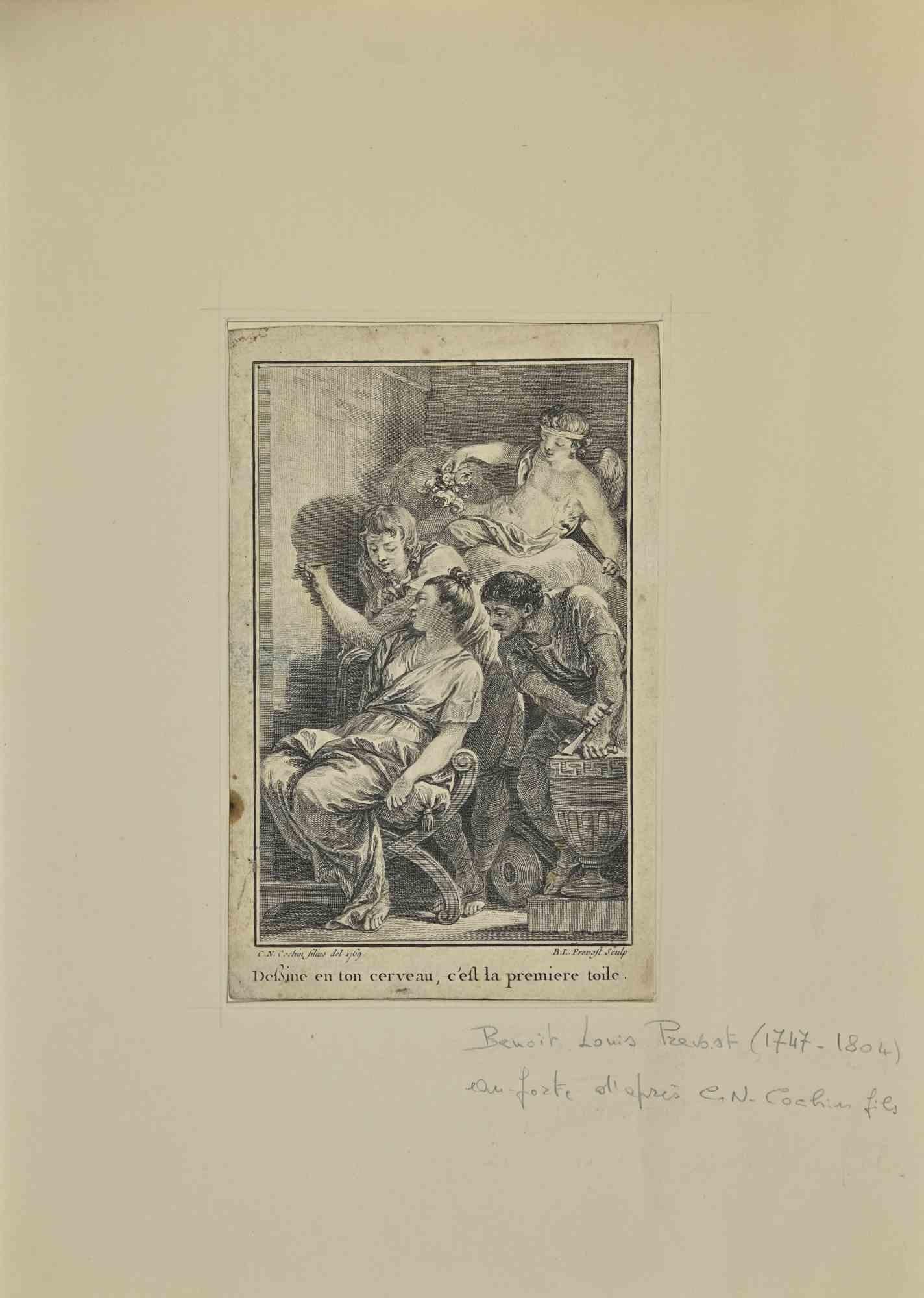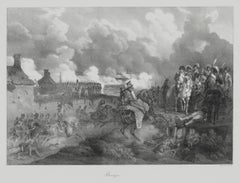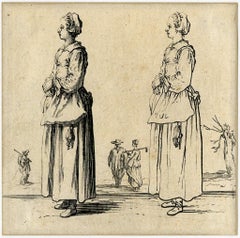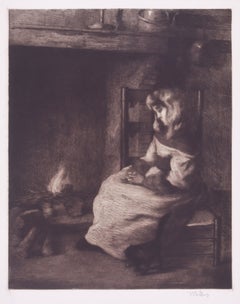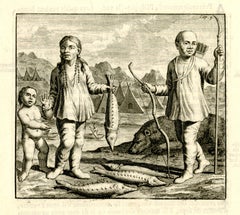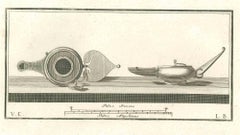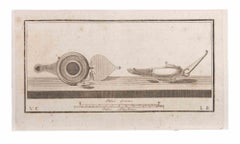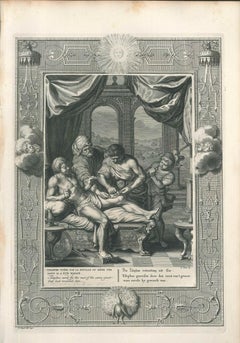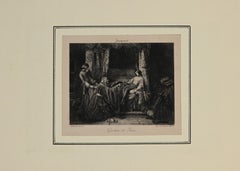Items Similar to La Lampe Polonoise
Want more images or videos?
Request additional images or videos from the seller
1 of 6
Jean Baptist Le PrinceLa Lampe Polonoise1771
1771
$450
£344.96
€394.83
CA$642.81
A$704.96
CHF 365.12
MX$8,470.66
NOK 4,597.73
SEK 4,315.10
DKK 2,949.76
About the Item
La Lampe Polonoise
Aquatint, 1771
Signed and dated in the plate lower left
Condition: Yellowing to the sheet
Image size: 6 1/8 x 8 1/8 inches
Reference: Hedou 147 ii/II
Provenance: C. Naumann (pencil signature vrso), Lugt 1939
His auction January 21-23, 1861
Biography
Born in the town of Metz in northern France, Jean-Baptiste Le Prince studied in Paris with François Boucher, who was then at the height of his career, before making a brief visit to Italy in 1754. Not long afterwards, in 1758, he travelled to Russia. Despite the fact that he arrived in the country almost unknown as an artist, within a few weeks he was engaged on the painted ceiling decoration of a room in the newly-built Winter Palace in Saint Petersburg. Le Prince was to remain in Russia for five years, working mainly at the Winter Palace, although most of his work there was later destroyed by fire. He also travelled extensively throughout the country, venturing as far east as Siberia, and his experiences led him to produce a large number of drawings of Russian life, costumes, events, scenery and customs. These drawings served as the basis for much of the artist’s later work, both as studies for paintings and as designs for engravings, following his return to France in 1762 or 1763. In December 1764, Le Prince announced the publication of a series of thirty-six prints made from his drawings (‘5 suites d’Habillemens d’après le figures dessinées en Russie’), followed by a further group of etchings issued the year after, and others in 1767 and 1768. (Other printmakers, such as Gilles Demarteau and Louis-Marin Bonnet, also produced engravings of Russian subjects after his drawings.) Elected to the Académie Royale in 1765 with a genre painting entitled The Russian Baptism, Le Prince exhibited fifteen paintings of Russian subjects at the Paris Salon of that year. At around the same time he provided thirty-two drawings to illustrate the Abbé Jean Chappe d’Auteroche’s Voyage en Sibérie, published in 1768. In the preface to the book, Chappe wrote, ‘The drawings which accompany the descriptions of local customs are by Monsieur Le Prince, of the Academy of Painting: one sees by the beauty of his compositions, the richness of his imagination, and his rare talent for drawing costumes and nature, that he has studied in Russia.’ Le Prince’s drawings for the Voyage en Sibérie have been described as ‘among his most significant works…Highly finished and minutely detailed, the exotic images in the Voyage drawings provide a vocabulary for virtually all of the artist’s later work.’ Le Prince continued to produce paintings, drawings, suites of prints and tapestry cartoons of Russian subjects well into his later career, these russeries taking their place alongside the popular taste for similarly exotic chinoiserie and turquerie subjects. He regularly exhibited both paintings and prints at the Salons and was one of the first artists to develop and perfect the medium of aquatint as a printing process, producing a number of what he termed ‘gravures au lavis’ between 1768 and 1774. (As Perrin Stein has noted, ‘Le Prince’s ability with ink wash [as a draughtsman] undoubtedly played a role in his contributions to the development of the aquatint technique in printmaking, in which areas of uneven ground are successively stopped out with varnish to create etched plates in imitation of ink-wash drawings.’) Ill health led Le Prince to retire to the country in 1775, when he also began to move away from Russian subjects in favour of less exotic landscapes and pastoral scenes. As the 19th century scholar Baron Roger Portalis wrote of the artist, ‘Leprince’s manner is wise and grand; his drawings, where the landscape often plays a major role, are well composed, and it is said of him that he had managed to extend to his works the happy gift that he had of making himself loved.’ At the sale of the contents of the artist’s studio, held in November 1781 after his death, the auction catalogue listed numerous drawings of Russian subjects, as well as twelve sketchbooks made during his travels in the country (‘Douze petits Cartons contenant des Croquis faits en Russie, d’après nature’) and several Russian costumes. Significant groups of drawings of Russian subjects by Le Prince are today in the museums of Saint Petersburg and Moscow, as well as the Musée des Beaux-Arts in Rouen and the Rosenbach Museum and Library in Philadelphia, which houses an almost complete set of drawings for Chappe d’Auteroche’s Voyage en Sibérie.
Courtesy Stephen Ongpin
- Creator:Jean Baptist Le Prince (French)
- Creation Year:1771
- Dimensions:Height: 6.13 in (15.58 cm)Width: 8.13 in (20.66 cm)
- Medium:
- Movement & Style:
- Period:1770-1779
- Condition:
- Gallery Location:Fairlawn, OH
- Reference Number:Seller: FA69691stDibs: LU14015513522
About the Seller
5.0
Recognized Seller
These prestigious sellers are industry leaders and represent the highest echelon for item quality and design.
Platinum Seller
Premium sellers with a 4.7+ rating and 24-hour response times
Established in 1978
1stDibs seller since 2013
817 sales on 1stDibs
Typical response time: <1 hour
Associations
International Fine Print Dealers Association
- ShippingRetrieving quote...Shipping from: Akron, OH
- Return Policy
Authenticity Guarantee
In the unlikely event there’s an issue with an item’s authenticity, contact us within 1 year for a full refund. DetailsMoney-Back Guarantee
If your item is not as described, is damaged in transit, or does not arrive, contact us within 7 days for a full refund. Details24-Hour Cancellation
You have a 24-hour grace period in which to reconsider your purchase, with no questions asked.Vetted Professional Sellers
Our world-class sellers must adhere to strict standards for service and quality, maintaining the integrity of our listings.Price-Match Guarantee
If you find that a seller listed the same item for a lower price elsewhere, we’ll match it.Trusted Global Delivery
Our best-in-class carrier network provides specialized shipping options worldwide, including custom delivery.More From This Seller
View AllNapoleon a Bautzen
By Hippolyte Bellangé
Located in Fairlawn, OH
Napoleon a Bautzen
Lithograph, 1822
Signed in the stone (see photo)
From: Arnault, A. V.
Vie Politique et Militaire de Napoleon (120 plates)
Published, Paris, Librairie Historiquem 1...
Category
1820s Romantic Figurative Prints
Materials
Lithograph
La Paysanne Tournee a Gauche, Les Mains Appuyees L’Une sue L’Autre
By Jacques Callot
Located in Fairlawn, OH
La Paysanne Tournee a Gauche, Les Mains Appuyees L’Une sue L’Autre (Peasant turned left holding her hands)
Etching, 1618
From: Varie Figure (16 plates)
Condition: very good, aging
Im...
Category
1610s Old Masters Figurative Prints
Materials
Etching
L'Angellus
By Alfredo Müller
Located in Fairlawn, OH
L'Angellus
Etching, engraving and acquatint on Arches paper, 1902
Signed lower right by the artist (see photo)
This is a first state impression printed in a brown/black ink, one of ...
Category
Early 1900s Art Nouveau Figurative Prints
Materials
Etching
Ostiakes
By Cornelis de Bruijn
Located in Fairlawn, OH
Ostiakes
Engraving, 1718
From: Voyages de Corneille le Brun par la Moscovie, en Perse, et aux Indes Occidentales (French translation, 1718), Chapter XXI
The Ostyak are a member of an...
Category
1710s Old Masters Landscape Prints
Materials
Engraving
Bacchanal
By Giovanni Andrea Podestà
Located in Fairlawn, OH
Bacchanal
Etching, 1649
Inscribed in the square left: "Magnificentis/simo Principi/Paolo lorda/no. II Bracci/ani Duci/Aud. P.DDD/1640; Inscribed on right: Rome apud Franciscsum Saluucium
Condition: Usual centerfolds from paper manufacture
Plate: 10 3/8 x 15 1/2"
Sheet: 11 1/2 x 16 1/2";
References:
Bartsch XX.4
Sopher Plate 145
An impression of this image is in the collections of the Philadelphia Museum of Art and the National Gallery of Art, Washington
An exceptionally rich impression in excellent condition.
From Wikipedia, the free encyclopedia
Putti as Allegory of Music
Giovanni Andrea Podestà or Giovanni Andrea Podesta (1608 - c. 1674) was an Italian painter and engraver who was principally active in Rome. His principal subject matter is children playing in landscapes with classical objects. His works show the influence of Poussin's Arcadian landscapes and bacchanals, which were ultimately derived from Titian's bacchanals.
Life
Giovanni Andrea Podestà was born in Genoa. He was formed in Genoa with Giovanni Andrea de Ferrari and Domenico Fiasella according to the information provided by the contemporary Genoese biographer Raffaele Soprani. He is also recorded as an apprentice of Giovanni Battista Paggi in 1627.
His presence is documented from in 1634 in Rome where he made drawings after the statues and ancient reliefs at the famous Giustiniani collection. These were subsequently engraved for publication in the 'Galleria Giustiniani'. The artist's career ran a course similar to that of the young Domenico Fiasella. In Rome his art evolved in contact with the works of Poussin, Andrea di Leone, Pietro Testa...
Category
17th Century Old Masters Figurative Prints
Materials
Etching
Vive le Vin
By Hippolyte Bellangé
Located in Fairlawn, OH
Medium: Lithograph with tint stone
Dimensions: Sheet: 13 3/4 x 10 1/2" (34.80 x 26.70 cm); Mat: 20 x 16"
Publisher: G. Engelmann
References And Exhibitions:
Published by G. Engelmann
Reference: Beraldi p. 17Medium: Lithograph with tint stone
Dimensions: Sheet: 13 3/4 x 10 1/2" (34.80 x 26.70 cm); Mat: 20 x 16"
Publisher: G. Engelmann
References And Exhibitions:
Published by G. Engelmann
Reference: Beraldi p. 17
Medium: Lithograph with tint stone
Dimensions: Sheet: 13 3/4 x 10 1/2" (34.80 x 26.70 cm); Mat: 20 x 16"
Publisher: G. Engelmann
References And Exhibitions:
Published by G. Engelmann
Reference: Beraldi p. 17
Joseph Louis Hippolyte Bellangé (17 January 1800 – 10 April 1866) was a French battle painter and printmaker. His art was influenced by the wars of the first Napoleon, and while a youth, he produced several military drawings...
Category
1820s Romantic Prints and Multiples
Materials
Lithograph
You May Also Like
Oil Lamp - Etching by Vincenzo Campana - 18th Century
By Vincenzo Campana
Located in Roma, IT
Oil Lamp is an Etching realized by Vincenzo Campana (1730-1806).
The etching belongs to the print suite “Antiquities of Herculaneum Exposed” (original title: “Le Antichità di Ercola...
Category
Late 18th Century Old Masters Figurative Prints
Materials
Etching
Oil Lamp - Etching by Vincenzo Campana - 18th Century
By Vincenzo Campana
Located in Roma, IT
Oil Lamp is an Etching realized by Vincenzo Campana (1730-1806).
The etching belongs to the print suite “Antiquities of Herculaneum Exposed” (original title: “Le Antichità di Ercola...
Category
Late 18th Century Old Masters Figurative Prints
Materials
Etching
$195 Sale Price
25% Off
Telephe guéri, from "Le Temple des Muses"
By Bernard Picart
Located in Roma, IT
Black and white etching on wire rod paper, representing the myth of Telephus and his healing.
Plate with fresh impression, from the volume “Le Temple des Muses...
Category
1740s Old Masters Figurative Prints
Materials
Etching
Gaston de Foix - Etching by Louis Lemaire - 1880s
Located in Roma, IT
Gaston de Foix is an etching on paper realized by Louis Lemaire, in 1880s.
Signed on the lower left margin. Titled on the bottom center. Imp. A. Salmon ...
Category
1880s Modern Interior Prints
Materials
Etching
Oil Lamp - Etching by Luigi Biondi - 18th Century
Located in Roma, IT
Oil Lamp is an Etching realized by Luigi Biondi (1776-1839).
The etching belongs to the print suite “Antiquities of Herculaneum Exposed” (original title: “Le Antichità di Ercolano ...
Category
18th Century Old Masters Figurative Prints
Materials
Etching
Painter - Etching by Benoit Louis Prevost - 19th Century
Located in Roma, IT
Painter is an etching realized by Benoit Louis Prevost in the 19th Century.
Good conditions with slight foxing.
The artwork is realized through deft expressive strokes.
Category
19th Century Modern Figurative Prints
Materials
Etching
More Ways To Browse
Tapestry Russia
Antique Drawing Set
Russian Engraving
Engravings Russia
Antique Cartoon Prints
Louis Marin Bonnet
Jane Goldman
Joni Frankel
Peter Max Green Dress
Roy Lichtenstein Oval Office
Shaker Stove
Sleeping Beauty 1959 Lobby Card
Waiting For The Boys
Benjamin Buckley
C Riom
Charles Fazzino 3 D
David Hockney Rue De Seine
Desire Guilmard
